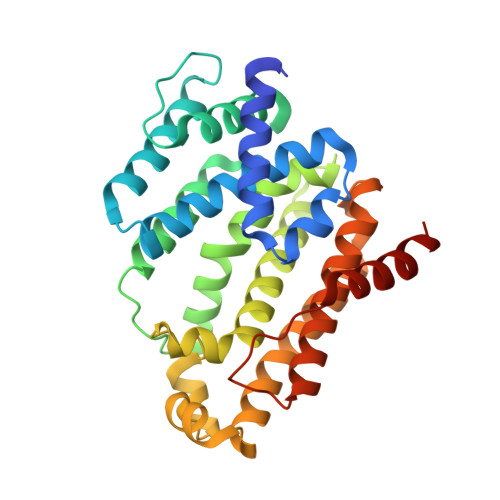Binding modes of zaragozic acid A to human squalene synthase and staphylococcal dehydrosqualene synthase
Liu, C.I., Jeng, W.Y., Chang, W.J., Ko, T.P., Wang, A.H.J.(2012) J Biological Chem 287: 18750-18757
- PubMed: 22474324
- DOI: https://doi.org/10.1074/jbc.M112.351254
- Primary Citation of Related Structures:
3VJ8, 3VJ9, 3VJA, 3VJB, 3VJC, 3VJD, 3VJE - PubMed Abstract:
Zaragozic acids (ZAs) belong to a family of fungal metabolites with nanomolar inhibitory activity toward squalene synthase (SQS). The enzyme catalyzes the committed step of sterol synthesis and has attracted attention as a potential target for antilipogenic and antiinfective therapies. Here, we have determined the structure of ZA-A complexed with human SQS. ZA-A binding induces a local conformational change in the substrate binding site, and its C-6 acyl group also extends over to the cofactor binding cavity. In addition, ZA-A effectively inhibits a homologous bacterial enzyme, dehydrosqualene synthase (CrtM), which synthesizes the precursor of staphyloxanthin in Staphylococcus aureus to cope with oxidative stress. Size reduction at Tyr(248) in CrtM further increases the ZA-A binding affinity, and it reveals a similar overall inhibitor binding mode to that of human SQS/ZA-A except for the C-6 acyl group. These structures pave the way for further improving selectivity and development of a new generation of anticholesterolemic and antimicrobial inhibitors.
- Institute of Biological Chemistry, Academia Sinica, Taipei 115, Taiwan.
Organizational Affiliation:

















